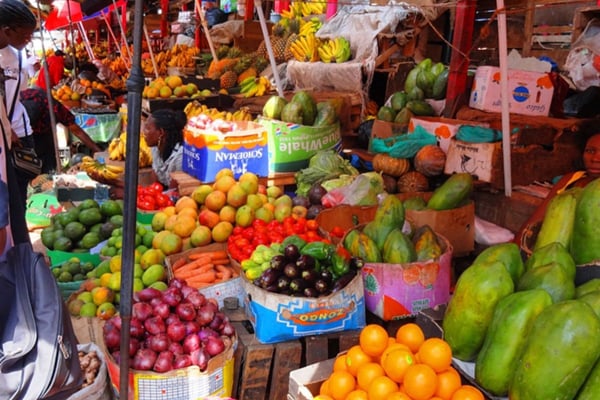Rise in food, fuel prices pushes up inflation rate

A number of food items have registered an increase in prices in the last two months. Photo | File
What you need to know:
- According to Uganda Bureau of Statistics, the rise in inflation in November was driven by goods and services under food and non-alcoholic beverages, transport, housing, water and electricity, among others.
Commodity prices have increased the most in November in over three years, according to Uganda Bureau of Statistics (Ubos).
In data contained in the Consumer Price Index, Ubos indicated that a number of commodity prices had tremendously increased with carrots, which during November, registered a 14.1 percent surge in price, recording the highest rise.
For instance, Ubos noted a kilogramme of carrots had increased from Shs2,248 in October to Shs2,565.
During the period, according to Ubos, diesel prices rose by 3.7 percent from Shs3,808 per litre to Shs3,950 per liter while petrol prices increased from Shs4,219 to an average of Shs4,358, representing a 3.3 percent surge.
Sugar prices registered a 5 percent increase, rising from an average of Shs3,038 in October to Shs3,188 while avocado prices increased by 9.5 percent with a kilogramme going from Shs1,137 to Shs1,244.
Chicken kroiler prices rose 8.8 percent, increasing from Shs15,002 per kilogramme to Shs16,326 while matooke increased by 8.7 percent, rising from Shs920 to Shs1,000 for every kilogramme.
Prices of different commodities have been rising, worsened by an increase in fuel prices, which has been blamed on disruptions of the international market.
Over the period, cooking oil (refined) prices increased by 4 percent from Shs2,423 per mililitre to Shs2,521 while dried cassava price rose by 5 percent, increasing from Shs1,201 in October to Shs1,261.
Commodity price increases, Ubos said yesterday, had inflamed inflationary pressures, forcing headline inflation to rise to 2.6 percent from 1.9 percent.
While presenting the Consumer Price Index in Kampala yesterday, Mr Edgar M. Niyimpa, the Ubos principal statistician price statistics, said the rise in headline inflation was mainly driven by an increase in prices of commodities under the food and non-alcoholic beverages category, which during the period increased by 4.6 percent.
Other contributors, he said, included transport prices, which increased by 3.5 percent, housing, water, electricity, gas and other fuels, which increased by 0.1 percent. However, Ubos indicates prices decreases were registered among commodities in personal care, social protection and miscellaneous goods category, which declined by 2.3 percent. Prices in the recreation, sport and culture declined by - 0.8 percent while clothing and footwear fell by 1.9 percent.
Mr Niyimpa said, core inflation, which measures change in prices of goods and services apart from food and energy, increased to 2.6 percent up from 2.1 percent in October.
This was mainly due to annual other goods inflation, which rose to 3.5 percent from 3 percent in October. The increase was also influenced by growth in annual services inflation, which rose to 1.5 percent up from 1.1 percent in October.
Non-core inflation
According to Ubos, non-core inflation increased to 2.9 percent up from 0.8 percent in October mainly due to food crops and related items inflation, which rose to 3.6 percent from 1.7 percent.
It was also influenced by vegetables, tubers, plantains, cooking bananas and pulses inflation, which rose to 5.6 percent in November up from 2.9 percent in October.




